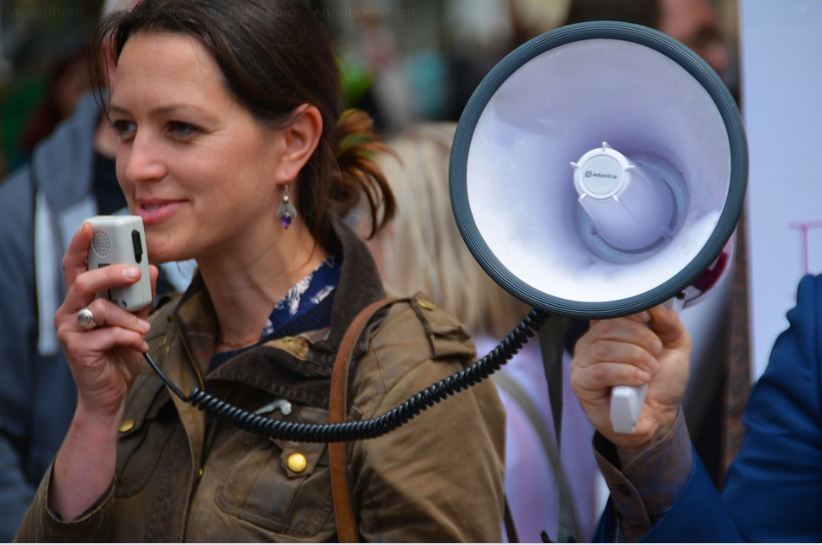Visualization For Public Speaking
Learn how to overcome your fears and feel more confident when giving a public speech.

Selfpause Affirmation App
Download the app to get 1,000’s of affirmation meditations and everything you need to write, record and listen to your own.
If you are terrified of public speaking, rational visualization can be a great way to overcome your fears. This technique is known to improve the mind and help you withdraw your senses from the surrounding world. It can also help you organize your knowledge of the cosmos. It can help you overcome your fears and feel more confident when it comes time to speak in public.
Rational visualization reduces fear of public speaking

The use of visualization has been shown to reduce the fear of public speaking. The technique is called coping rehearsal and is part of a variety of psychological techniques to help reduce anxiety. This technique works by allowing you to imagine how you would react in case of failure. This type of visualization will help you to feel less nervous, and it will also help you speak better.
In one study, students were asked to visualize a speech, and those who did so rated their anxiety significantly lower than those who didn’t. This was not surprising given that women tend to be more apprehensive than men. Visualization is a great way to reduce the fear of public speaking by allowing yourself to imagine the worst-case scenario before giving a speech. In addition to preparing yourself mentally, you should also familiarize yourself with the topic you’re going to be speaking on and have some background knowledge on it.
In addition to visualization, you should vividly imagine the speech you’ll deliver. You should do this from a first-person perspective, so you can fully experience it. It’s best to imagine the speech in a multisensory way, including the colors of the room and how you will feel holding a microphone. This way, you’ll have a more realistic picture of how you’ll present your ideas.
Using a video of a model speaker can also be helpful. By visualizing yourself giving a speech, you will become more confident and able to perform it confidently. You can also improve your audience’s response by using positive visualization techniques. This technique has been proven to reduce the fear of public speaking.
Using imagery can help reduce the fear of public speaking and other phobias. For example, if you are nervous about giving a speech, you can try visualizing the audience’s applause and smiling congratulatory faces. When you visualize the ideal speech, your nervous system can’t distinguish between fantasy and reality, and it responds in a way that makes you feel more comfortable.
It improves the mind

Visualization is an effective technique to reduce the fear of public speaking. It involves rehearsing a speech in your mind. It helps you remember the details and build your confidence. You can practice visualization anytime, whether you’re preparing for a speech or a lecture.
Visualization is important for public speaking because it prepares your mind for the situation. It works by engaging your reticular activating system, which acts as a filter to help you focus on the most important information. In general, the brain processes around 126 bits of information per second.
Visualization works by involving the imagination in goal-setting. People who use visualization are motivated to complete their tasks because they get fired up and excited. This enthusiasm will give them the mental energy needed to perform their task. Visualization can also help you control your thoughts and body reactions.
Visualization is also a good confidence booster. When you practice visualization, you can think about your speech and perform it more confidently. Practice it in a quiet space and close your eyes. You can even do visualization exercises while you’re waiting to give your speech. These simple techniques can help you prepare better for your big day.
Our Top FAQ's
Some best practices for using visualization in public speaking include:
- Using clear and concise graphics that support your message
- Choosing visual aids that are appropriate for your audience and the context of your presentation
- Ensuring that your visual aids are legible and easy to understand
- Using visual aids to highlight key points, rather than simply repeating text or data
- Practicing with your visual aids to ensure that they work smoothly during your presentation
There are several ways to effectively incorporate visual aids into your public speaking presentations:
- Plan ahead and choose visual aids that will help you effectively convey your message
- Use visual aids that are appropriate for your audience and the context of your presentation
- Practice with your visual aids to ensure that they work smoothly during your presentation
- Use visual aids to highlight key points, rather than simply repeating text or data
- Make sure your visual aids are legible and easy to understand
Some creative ways to use visualization to engage your audience include:
- Using interactive visual aids, such as graphs or charts that allow your audience to explore data or trends
- Using visual aids that tell a story or illustrate a process, such as timelines or flowcharts
- Incorporating multimedia elements, such as videos or slideshows, into your presentation
- Using visual aids that add a touch of humor or surprise, such as infographics or memes
- Asking your audience to participate in creating a visual aid, such as by brainstorming ideas on a whiteboard or creating a mind map together
To ensure that your visualizations support and enhance your message, rather than distract from it:
- Choose visual aids that are appropriate for your audience and the context of your presentation
- Use visual aids to highlight key points, rather than simply repeating text or data
- Ensure that your visual aids are legible and easy to understand
- Practice with your visual aids to ensure that they work smoothly during your presentation
- Avoid using too many visual aids or visual aids that are too complex or confusing
To effectively convey complex information to your audience using visualization:
- Use visual aids that clearly and concisely illustrate key concepts or trends
- Choose visual aids that are appropriate for your audience and the context of your presentation
- Use visual aids to break down complex information into more manageable chunks
- Practice with your visual aids to ensure that they work smoothly during your presentation
- Consider using multimedia elements, such as videos or animations, to help explain complex concepts in a more interactive and engaging way.
